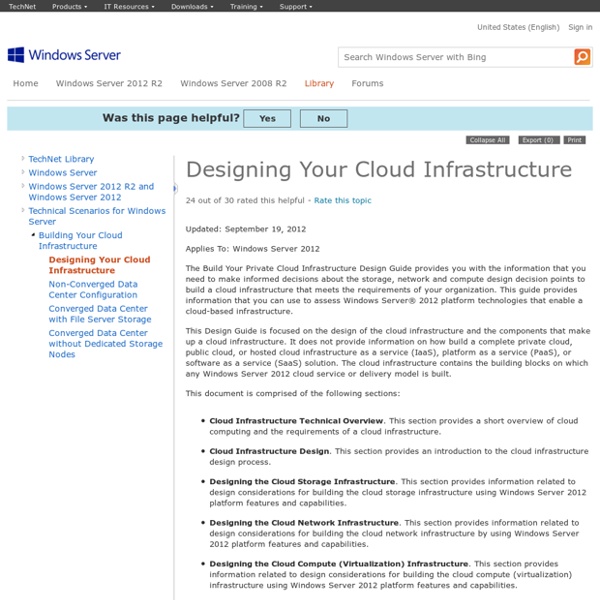Designing Your Cloud Infrastructure

Private Cloud Reference Model
This document gives an overview of a Private Cloud Reference Model. For the purposes of this document, a Reference Model is defined as the problem definition, requirements, and scope for a specific domain including the identification of all layers (or subdomains) and any interactions or dependencies between the components. Note: This document is part of a collection of documents that comprise the Reference Architecture for Private Clouddocument set. The Solution for Private Cloud is a community collaboration project. of this article is now available as part of the Cloud Services Foundation Reference Architecture article set. This Reference Model forms the basis, or cornerstone, for all Reference Architecture in a Private Cloud. and drives coherency of approach amongst the many authors who contribute to the Private Cloud Reference Architecture documentation set. The Private Cloud Reference Model defines the scope and the problem space for its domain. . 2.1 Service Delivery Layer
SCVMM (virtual) environments
An SCVMM lab environment is a collection of virtual machines on which you can run tests. You create and manage them with Microsoft Test Manager. Typically, you use lab environments when you’re testing an application that runs on servers, such as a web application. You run the server components on lab machines, and run your web browser or client app on your own local machine. By using SCVMM environments, you can: Collect diagnostic data while you perform your tests. Don’t have SCVMM in your team project collection yet? As an alternative, you might want to consider using standard environments. SCVMM environments can be saved as templates. Open the lab center, go to the Library page and look at the environments. If you didn’t find a suitable environment or template, you can create one from your project’s collection of virtual machines. Start the new environment wizard. On the machines page, choose virtual machines or virtual machine templates to add to your environment.
Related:
Related:



